 Once we deposited our luggage (actually, our room wasn't ready so we left our luggage at the front desk), Emilee and I headed out for the museums. We went first to the Van Gogh Museum, where we spent a good deal of time because we had audio guides. I really enjoyed the audio guide because when I visited the museum 30+ years ago when I was in college, there were no audio guides that I remember....Or perhaps I was on my poor college student budget and just didn't want to pay for one...In any case, I did learn more about Van Gogh than I previously knew. Unfortunately, I was not allowed to take photos inside, as I was back then. Something that I learned and that surprised me about Van Gogh was the categorization given to his art - Modern Art. Somehow, I just don't think of Van Gogh as "modern" art. (For a great slideshow of Van Gogh's paintings as well as the song, "Starry Starry Night" by Don McLean, go to: http://www.youtube.com/watch?v=dipFMJckZOM.)
Once we deposited our luggage (actually, our room wasn't ready so we left our luggage at the front desk), Emilee and I headed out for the museums. We went first to the Van Gogh Museum, where we spent a good deal of time because we had audio guides. I really enjoyed the audio guide because when I visited the museum 30+ years ago when I was in college, there were no audio guides that I remember....Or perhaps I was on my poor college student budget and just didn't want to pay for one...In any case, I did learn more about Van Gogh than I previously knew. Unfortunately, I was not allowed to take photos inside, as I was back then. Something that I learned and that surprised me about Van Gogh was the categorization given to his art - Modern Art. Somehow, I just don't think of Van Gogh as "modern" art. (For a great slideshow of Van Gogh's paintings as well as the song, "Starry Starry Night" by Don McLean, go to: http://www.youtube.com/watch?v=dipFMJckZOM.) was a nice park, one I hadn't visited before. Emilee ordered a cheeseburger and it looked quite delicious. I ordered a baguette with brie cheese. When I asked the young man what the baguette looked like, I got the answer I deserved: "A baguette." What I meant to ask was, "What does the sandwich look like...i.e., how big is it,
was a nice park, one I hadn't visited before. Emilee ordered a cheeseburger and it looked quite delicious. I ordered a baguette with brie cheese. When I asked the young man what the baguette looked like, I got the answer I deserved: "A baguette." What I meant to ask was, "What does the sandwich look like...i.e., how big is it,  etc." I saw no samples, so with his answer I just laughed and said I'd take one. That sandwich, along with my Amstel beer, hit the spot. (The river Amstel runs through Amsterdam. However, Heineken is the big, local brewery in Amsterdam.)
etc." I saw no samples, so with his answer I just laughed and said I'd take one. That sandwich, along with my Amstel beer, hit the spot. (The river Amstel runs through Amsterdam. However, Heineken is the big, local brewery in Amsterdam.)
 masterpieces were still on display. The big draw at the Rijksmuseum is Rembrandt and Vermeer (as in 'The Girl With the Pearl Earring'....even though that painting is in The Hague). Rembrandt's biggest draw is "The Night Watch". My favorite paintings were Hendrick Avercamp's Winter Landscape with Ice Skaters, (I wonder if Grandma Moses was inspired by some of his paintings???), Rembrandt's portraits of some of the Dutch women (Maria Tripp) because the details are so fine, esp. in the lace!, Vermeer's Kitchen Maid and Little Houses in Delft a.k.a. The Little Street.
masterpieces were still on display. The big draw at the Rijksmuseum is Rembrandt and Vermeer (as in 'The Girl With the Pearl Earring'....even though that painting is in The Hague). Rembrandt's biggest draw is "The Night Watch". My favorite paintings were Hendrick Avercamp's Winter Landscape with Ice Skaters, (I wonder if Grandma Moses was inspired by some of his paintings???), Rembrandt's portraits of some of the Dutch women (Maria Tripp) because the details are so fine, esp. in the lace!, Vermeer's Kitchen Maid and Little Houses in Delft a.k.a. The Little Street. On the second day of our Amsterdam excursion, Emilee and I decided to head out of town. Or perhaps I should say I coaxed Emilee into heading out of Amsterdam. I really felt I needed to get away from the city and I had never seen The Hague. I wanted to see where the international arbitrations were held in order to keep peace in the world. So, with Eurailpass in hand, we hopped an express train headed for "Den Haag". Forty five minutes later we arrived. Unfortunately for us and countless others, you have to make a reservation a week in advance to take a tour of the Peace Palace. Obviously, we weren't going on a tour. We weren't even getting inside the gates! But, now when I hear "The Hague" on the news, I will be able to picture the Palace, the city, and with help from a guide that I bought, I'll understand better how the arbitration works. It is a beautiful building, much of it donated by Andrew Carnegie.
The Peace Flame
The World Peace Flame, surrounded by rocks donated by all the countries who support Peace and the Peace Palace.
Other nice sights:



Old Canal Boat with Wings (Rudders)

The train rides on this trip were very good experiences. We didn't have reservations on the first ICE train from Frankfurt to Amsterdam, but they weren't required. While we did end up getting "bumped" from our seats after the first stop, we ended up in an enclosed cabin (love those) with a Japanese couple who had just arrived in Europe. He shared with me that he had visited as a backpacking student many years ago, and I shared with him that I had, too. That was really quite funny. Then the Attendant for our train car came to our door and said he had been looking for us; he had helped us find "free" seats, but we explained that someone said they had reserved them. He said that they hadn't marked them as reserved, but sometimes that happens. I made sure those new seats we were in were free! He was the funniest guy! He stayed and talked to all of us for a long time, telling about his experiences as a young(er) man living in Las Vegas, and how he worked, but gambled all his money away! He was hilarious! The Japanese man was even understanding him and laughing. .....Later, I asked the man from Japan if there trains were faster than the ICE train, and he said, oh yes, much faster. And at that point he could see some kind of monitor which showed that we were going (only) 150 kph. But at that particular point in time, our train had slowed down. They get to speeds close to 200 mph. I can't imagine how fast the Japanese Bullet Train is!

The "Bad"
 With some hours of sunlight still left in the day, Emilee and I searched for another museum that might be open later than 5:00 (17:00). And we found one - The Anne Frank House (Anne Frank Huis). So, with map in hand, we headed for Prinsengracht St. Having been there twice before, albeit many years ago, I had some idea of how to get there and what it would look like. We did find the house easily enough, but once again, many things about it had changed. The first change I noticed was the entrance to the museum. A new entranceway was built into the house to the right of the Frank House for the entrance, the Museum Shop, etc., in order to reconstruct the front of the house to the way it was during the war. I didn't realize when I visited it years ago, that part of the house and been changed to build the entrance to the museum. So now, what once was the entranceway is the "Warehouse" for the business that was being run from that house during the war. Mr. Frank had to change the name and put the business in his partner's name because Jews were not
With some hours of sunlight still left in the day, Emilee and I searched for another museum that might be open later than 5:00 (17:00). And we found one - The Anne Frank House (Anne Frank Huis). So, with map in hand, we headed for Prinsengracht St. Having been there twice before, albeit many years ago, I had some idea of how to get there and what it would look like. We did find the house easily enough, but once again, many things about it had changed. The first change I noticed was the entrance to the museum. A new entranceway was built into the house to the right of the Frank House for the entrance, the Museum Shop, etc., in order to reconstruct the front of the house to the way it was during the war. I didn't realize when I visited it years ago, that part of the house and been changed to build the entrance to the museum. So now, what once was the entranceway is the "Warehouse" for the business that was being run from that house during the war. Mr. Frank had to change the name and put the business in his partner's name because Jews were not 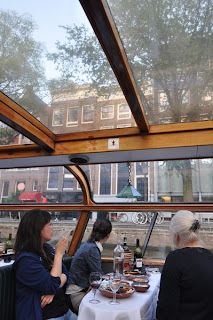 allowed to own businesses. (Note: Because of my confusion about the changes, I photographed the museum and not the house front when we left the museum. Later, from the boat, I realized my mistake and tried to take a photo of the house....Not very good, but...)
allowed to own businesses. (Note: Because of my confusion about the changes, I photographed the museum and not the house front when we left the museum. Later, from the boat, I realized my mistake and tried to take a photo of the house....Not very good, but...)Other changes I noticed were that professional looking displays had been built to house some of the artifacts, and signs had been made with quotations from Anne's diary, to go along with the artifacts/rooms. Each room had a multimedia (video) display explaining something about the house. That wasn't part of the museum previously. But the biggest change, in my mind, and I believe only in my mind, was I thought that the house had been furnished when I last visited it. According to the museum, it has never been furnished because Mr. Frank said the Germans removed all the furnishings when they occupied it, and that's the way he wanted it to stay as a museum. So, I must've been remembering photos in books and not my visit...but I'll have to go back and find my old photos. Something else that has changed....No photos allowed. In spite of that regulation, there was one photo that we could just not resist taking - one of Anne Frank's actual diary. It has not been on display in the Anne Frank House until this summer. That was the biggest, most important, and most moving 'change'.

Upon leaving the museum, we entered the bookstore. I purchased a book entitled, Anne Frank House - A Museum with a Story. While I have read Anne Frank's Diary, have studied a lot about her and the Holocaust, one detail escaped me that really does have significance: Anne learned halfway through writing her diary that the Dutch government asked that people save their diaries so that after the war, some of them could be printed. With that in mind, Anne started revisions to her diary. Those revisions were on separate sheets of paper. Also, when Otto Frank, the only survivor of the eight in the Annex, was preparing his daughter's diary for publication, he also write a revision, leaving out parts that he said were "nobody's business".
Sometimes I've wondered how a diary such as Anne's became so famous when obviously many Jews kept diaries. Auschwitz survivor and author, Primo Levi, wrote: "One single Anne Frank moves us more than the countless others who suffered just as she did but whose faces have remained in the shadows. Perhaps it is better that way; if we were capable of taking in all the suffering of all those people, we would not be able to live." I personally think her story became so famous because it was written by a teenager, a teenager who showed many of the same hopes, feelings, and disappointments of any teenager today. That's why Anne Frank touched so many...she was real, she was 'ordinary'. But she suffered through two years of confinement and hiding, something 'extraordinary' that most of us feel we could never have survived. Anne did not survive....in this life. She died in a concentration camp, just weeks before the Allies liberated the camps. But she has lived on through her diary.
The Ugly

In the middle of the Flower Market, among the tulip bulbs, were these seeds: Cannabis Starter Kit, i.e. "weed", "pot".
 Coffeehouses Everywhere - And I don't believe they sell coffee, or maybe they do. But mainly, they sell pot, hashish, pot/tobacco cigarettes. While pot is not considered "legal", it is "tolerated". Too tolerated, if you ask me. You walk along the streets and you can smell sickeningly sweet tobacco smoke. It's tobacco mixed with pot. Most of the Coffeeshops look rather dubious, too.
Coffeehouses Everywhere - And I don't believe they sell coffee, or maybe they do. But mainly, they sell pot, hashish, pot/tobacco cigarettes. While pot is not considered "legal", it is "tolerated". Too tolerated, if you ask me. You walk along the streets and you can smell sickeningly sweet tobacco smoke. It's tobacco mixed with pot. Most of the Coffeeshops look rather dubious, too. " Smart Shops" - What is so smart about them, is beyond me. I guess I am not "smart". These shops sell all kinds of "legal" drugs - "magic mushrooms", "Spanish Fly", drugs similar to Ecstasy, HTP....(I am giving you the information that I read in Rick Steve's Guide and telling you what I could see in the street windows.)
" Smart Shops" - What is so smart about them, is beyond me. I guess I am not "smart". These shops sell all kinds of "legal" drugs - "magic mushrooms", "Spanish Fly", drugs similar to Ecstasy, HTP....(I am giving you the information that I read in Rick Steve's Guide and telling you what I could see in the street windows.)On one of our walks through the city, Emilee and I saw a girl who could've been Emilee's age. At first I thought she was with two women who looked like they were her grandmothers. But getting closer, could see that these ladies were just hovering over her trying to help her. I saw the girls eyelids look like they were going to close....very heavy. She looked completely "out of it". As we passed by, I turned around and looked and saw her as she slowly, very slowly, went down to the ground. The ladies were trying to hold her, a young man ran to help, soon there was a small crowd. The young man was looking around with a frantic look on his face, as though he was looking for someone who either was with the girl or looking for someone who would call for help. Within minutes, an ambulance was headed her way. My guess: A tourist who tried these "tolerated drugs" and either took an overdose or had a bad reaction. All I could think of was, "What good is there in making these drugs so available?" Amsterdam had certainly drawn the spectrum of society that would want the drugs! I've never seen so many young people, and young "leftist" type of people in one place. I can't help but wonder what these young people are doing with their lives, will do with their lives, and what hope does that give Amsterdam for their youth?
 Isn't this a beautiful church? It's gorgeous. Now, picture walking around the left side of the church, along the narrow cobblestone street. You will see one sixteenth century house after another with their beautiful gabled rooftops. And in the windows of these houses you will see, no, not the beautiful lace curtains you normally see in Dutch windows, but you will see red lights. And what WE saw at around 10:30 a.m. were women, scantily clad, looking out from their perches, promiscuously moving their bodies to "sell their wares". Passing by one such building, I couldn't help but notice one door ajar, and in one glance saw that the bed was right there, right to the side of the window and the curtain. I wanted to throw up when I saw this! How much more tolerant can a people get? Directly across a narrow cobblestone street from the church is the Red Light District!!! The world's oldest profession is alive and well in Amsterdam! The good news is that the people of Amsterdam are trying to change their image in this respect - the landlords of some of these buildings have started renting out their "windows" to shops to display designer clothing. And the night cruises no longer take you to see the Red Light District. Whether it's because they just aren't showing it off anymore or whether the windows for these women are no longer on the canals, I am not certain. But tourists are still curious, including us - or I should say Emilee was curious because I'd already seen it from a canal cruise. So we followed Rick Steve's "Red Light District Walking Tour". After one street and about six "ladies", I asked Emilee if she'd seen enough or did she want to continue the "tour". She'd had enough, too!
Isn't this a beautiful church? It's gorgeous. Now, picture walking around the left side of the church, along the narrow cobblestone street. You will see one sixteenth century house after another with their beautiful gabled rooftops. And in the windows of these houses you will see, no, not the beautiful lace curtains you normally see in Dutch windows, but you will see red lights. And what WE saw at around 10:30 a.m. were women, scantily clad, looking out from their perches, promiscuously moving their bodies to "sell their wares". Passing by one such building, I couldn't help but notice one door ajar, and in one glance saw that the bed was right there, right to the side of the window and the curtain. I wanted to throw up when I saw this! How much more tolerant can a people get? Directly across a narrow cobblestone street from the church is the Red Light District!!! The world's oldest profession is alive and well in Amsterdam! The good news is that the people of Amsterdam are trying to change their image in this respect - the landlords of some of these buildings have started renting out their "windows" to shops to display designer clothing. And the night cruises no longer take you to see the Red Light District. Whether it's because they just aren't showing it off anymore or whether the windows for these women are no longer on the canals, I am not certain. But tourists are still curious, including us - or I should say Emilee was curious because I'd already seen it from a canal cruise. So we followed Rick Steve's "Red Light District Walking Tour". After one street and about six "ladies", I asked Emilee if she'd seen enough or did she want to continue the "tour". She'd had enough, too!So, there you have it, the Good, the Bad, and the Ugly of Amsterdam. This trip really clarified things for me about why we view sex and drugs from a different perspective than most Europeans - our Puritanical roots. I saw the church where our Pilgrim fathers worshipped after  leaving England, until the "tolerance" of Holland became too much for them and they said it was not a place they wanted to raise their families. Four hundred years later, I don't see where there has been much change!
leaving England, until the "tolerance" of Holland became too much for them and they said it was not a place they wanted to raise their families. Four hundred years later, I don't see where there has been much change!
Case in point: Emilee and I visited the NEMO Museum - Science and Technology. The fourth floor was devo ted to TEENS. On that floor were numerous exhibits dealing with hormones, with sex, with birth control (including about 20 'novelty'
ted to TEENS. On that floor were numerous exhibits dealing with hormones, with sex, with birth control (including about 20 'novelty'  condoms), and with sexual positions. Yes! They used little wooden jointed figures, put into, um, about 20 different positions and told the names for all of them. They even had an interactive French Kissing Display! Yep, one person stands on one side of the display and inserts his/her arm in a red heavy material sleeve, another person stands on the other side and puts his/her hand in the other sleeve, they move their arms/hands against each other's inside this glass case, and "French Kiss". I saw family after family with small children go through this floor. I was convinced of my Puritanical beliefs when I found myself feeling very embarrassed looking at some of these displays while the Dutch families handled it like they were looking at the robot, electrical, and water power displays on the floors below.
condoms), and with sexual positions. Yes! They used little wooden jointed figures, put into, um, about 20 different positions and told the names for all of them. They even had an interactive French Kissing Display! Yep, one person stands on one side of the display and inserts his/her arm in a red heavy material sleeve, another person stands on the other side and puts his/her hand in the other sleeve, they move their arms/hands against each other's inside this glass case, and "French Kiss". I saw family after family with small children go through this floor. I was convinced of my Puritanical beliefs when I found myself feeling very embarrassed looking at some of these displays while the Dutch families handled it like they were looking at the robot, electrical, and water power displays on the floors below.
Yes, my "tolerance" was pushed to its limits in Amsterdam. From now on, I will NOT say, "I love Amsterdam." I will say, "I love Schagen, Den Haag, Haarlem, Delft...." But I will NEVER again say, "I love Amsterdam."













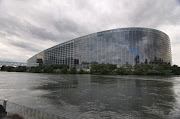
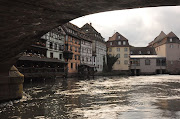
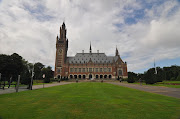
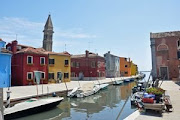
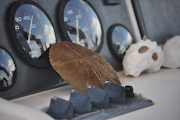
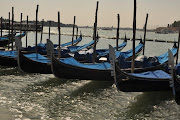
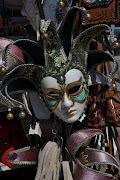
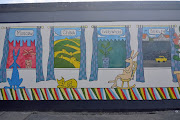

No comments:
Post a Comment